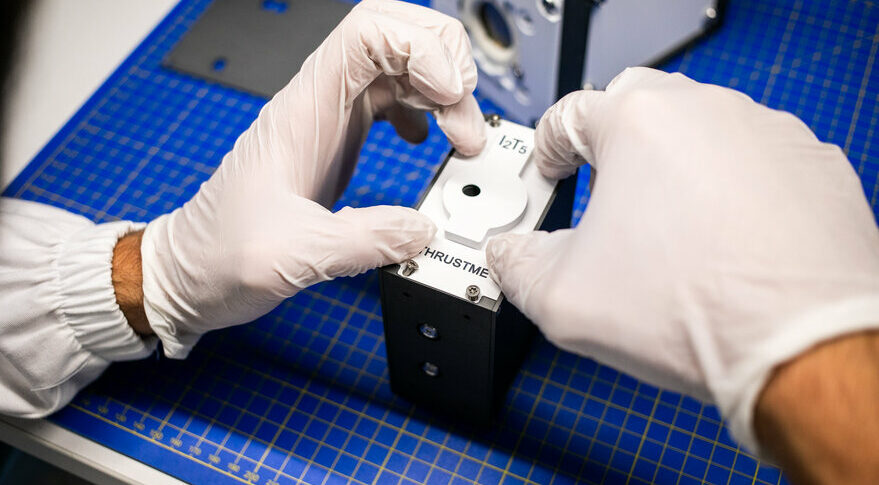
Spire to add ThrustMe propulsion to Lemur cubesats (Image Credit: Space News)
SAN FRANCISCO – Spire Global is adding propulsion to its multipurpose Lemur satellite constellation.
French startup ThrustMe announced plans Sept. 1 to provide seven I2T5 iodine cold gas propulsion systems for Spire three-unit cubesats scheduled to launch later this year on a SpaceX Falcon 9 rideshare mission.
“Incorporating propulsion into our satellites will increase the capability of our constellation and safety of operations,” Jeroen Cappaert, Spire co-founder and chief technology officer, said in a statement. “ThrustMe’s I2T5 unit has distinct advantages for Spire from a technical risk perspective. The small physical volume and low power requirements are critical for 3U satellites.”
Spire operates a constellation of more than 100 Lemurs cubesats equipped with sensors to gather weather data, track ships and airplanes, and provide customers with other space-based services. As electronic components shrink, Spire keeps packing additional sensors and other components into its satellites, which are roughly the size of a bottle of wine.
ThrustMe has delivered more than 20 I2T5 propulsion systems to clients around the world. In July, ThrustMe unveiled plans for a 900-square-meter site to manufacture 365 propulsion systems per year.
“It is particularly important for us to meet the needs of clients such as Spire, who have specific parameters for propulsion solutions,” Ane Aanesland, ThrustMe co-founder and CEO, said in a statement. “We have designed and developed a system that provides sufficient in-orbit maneuverability for satellites with power and volume constraints, so that they can perform essential and soon-to-be mandatory operations.”
Until recently, cubesat operators had few propulsion options. Now that several miniature thrusters have been flight proven, companies like Spire are ready to begin using the thrusters to move satellites around in orbit and to help them to reenter Earth’s atmosphere when their missions conclude.
Due to concerns about orbital debris and space traffic, government agencies around the world are tightening regulations related to collision avoidance and deorbit timelines.








